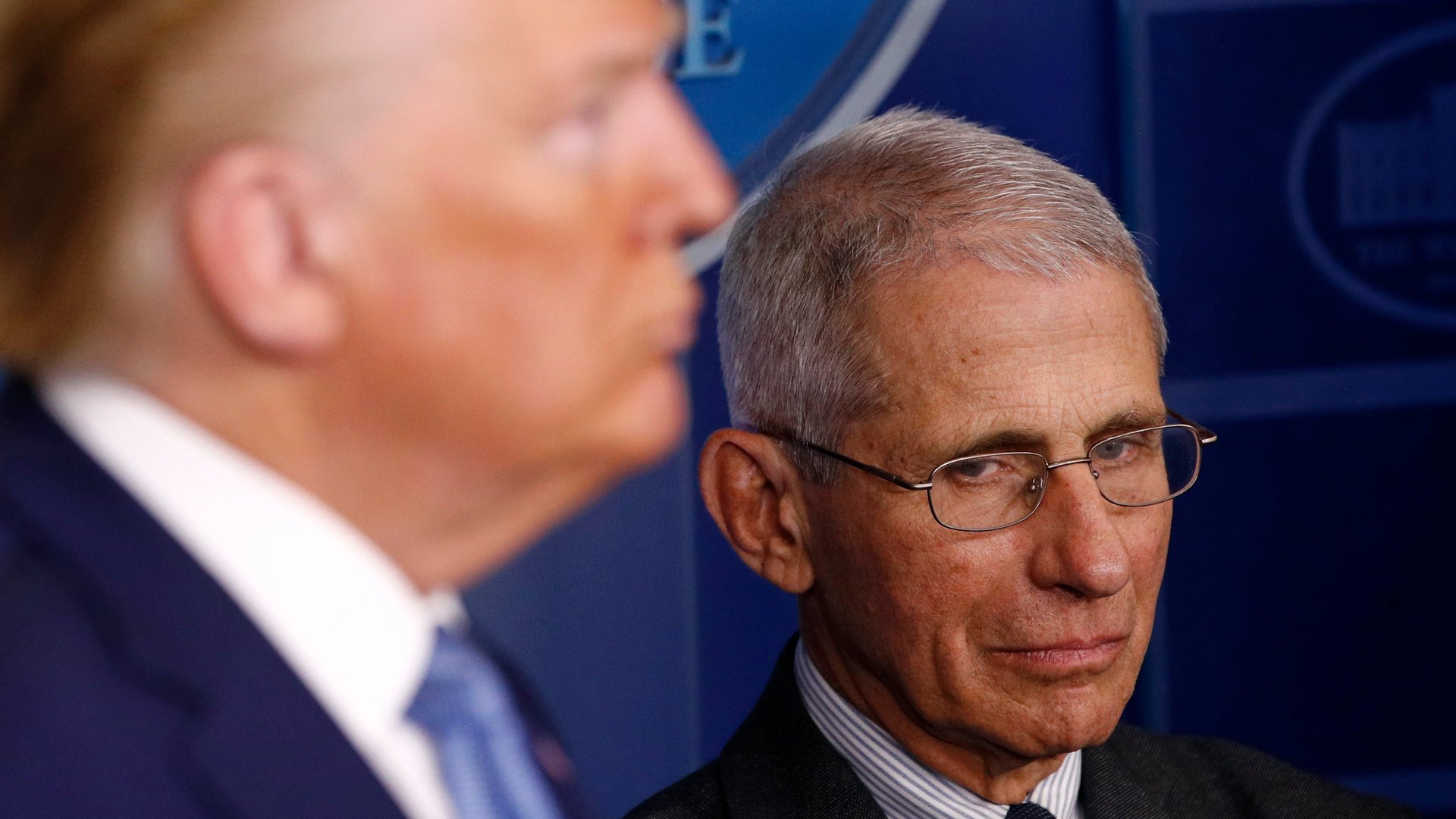Here are the disease-fighting jobs Trump did (and didn’t) eliminate
The US government didn’t heed dire warnings abroad about the novel coronavirus that causes Covid-19, leaving the country without sufficient tests or medical equipment to slow the spread of the disease.


The US government didn’t heed dire warnings abroad about the novel coronavirus that causes Covid-19, leaving the country without sufficient tests or medical equipment to slow the spread of the disease.
Why didn’t America know better? We won’t know for sure until the inevitable after-the-fact inquiries. Part of the problem was found in China’s slow response to the outbreak, which allowed the disease to spread around the world. Meanwhile Donald Trump was clearly concerned that the epidemic was a political threat, and didn’t take action when US intelligence reports began warning of danger in January.
And then there’s a third explanation—that government programs designed to provide forewarning were eliminated by the Trump White House. But this narrative isn’t so simple.
An embedded disease surveillance expert?
Reuters reported today that a US public health expert embedded with China’s disease control agency left her job in July 2019. Linda Quick was an employee of the US Centers for Disease Control and Prevention (CDC), in place to help provide expertise and outside information to her equivalents in Beijing. However, her job was eliminated by the White House during trade disputes with China.
While Quick wouldn’t have a formal role in responding to the disease, being on the ground in China might have helped bridge the gap between US and Chinese health officials reacting to the virus at a time when communication between higher-ups hasn’t been spectacular. But one expert quoted by Reuters suggested Quick’s presence might not have made a huge difference. “The problem was how the Chinese handled it,” said Scott McNabb, a former CDC epidemiologist. “What should have changed was the Chinese should have acknowledged it earlier and didn’t.”
A top official on the National Security Council?
Timothy Ziemer was a director on the National Security Council, heading a team focused on “Global Health Security and Biodefense.” The position was created by then-president Barack Obama in 2014, after an Ebola epidemic convinced White House officials that a dedicated staff was necessary to coordinate the response to future disease crises. In 2018, Ziemer left the government as Trump eliminated his directorate, with the responsibility for responding to a pandemic folded into the team in charge of arms control and fighting the spread of nuclear and biological weapons.
The Trump administration maintains that no capability was lost in this reshuffle, but critics—including former members of the directorate—say that the vacuum of leadership and expertise in the initial White House response shows how important it is to have senior staff focused on the risks of pandemic. Responding to an epidemic requires cooperation across a variety of government agencies, but without a dedicated coordinator, none has the responsibility to solve the problem. As one independent think tank noted in November 2019, while calling for the position to be reinstated, “it remains unclear who would be in charge at the White House in the case of a grave pandemic threat.”
International disease surveillance teams?
One early criticism of the administration’s handling of the epidemic concerned the end of another program created in the wake of the Ebola outbreak—the Global Health Security Agenda, where the US supports efforts by countries with less-developed public health systems to spot outbreaks and take action quickly, before disease can spread. That criticism appears to stem from stories written in 2018 to warn about the potential end of the program. However, lawmakers didn’t cut funding for the effort.
Instead, according to the CDC, work to develop effective disease surveillance continues in 19 partner countries, and the public health agency is collaborating with 60 nations around the world to address infectious disease threats. And China, where the novel coronavirus first emerged, has a relatively advanced disease-fighting agency and was never a target of the main surveillance-aid program.